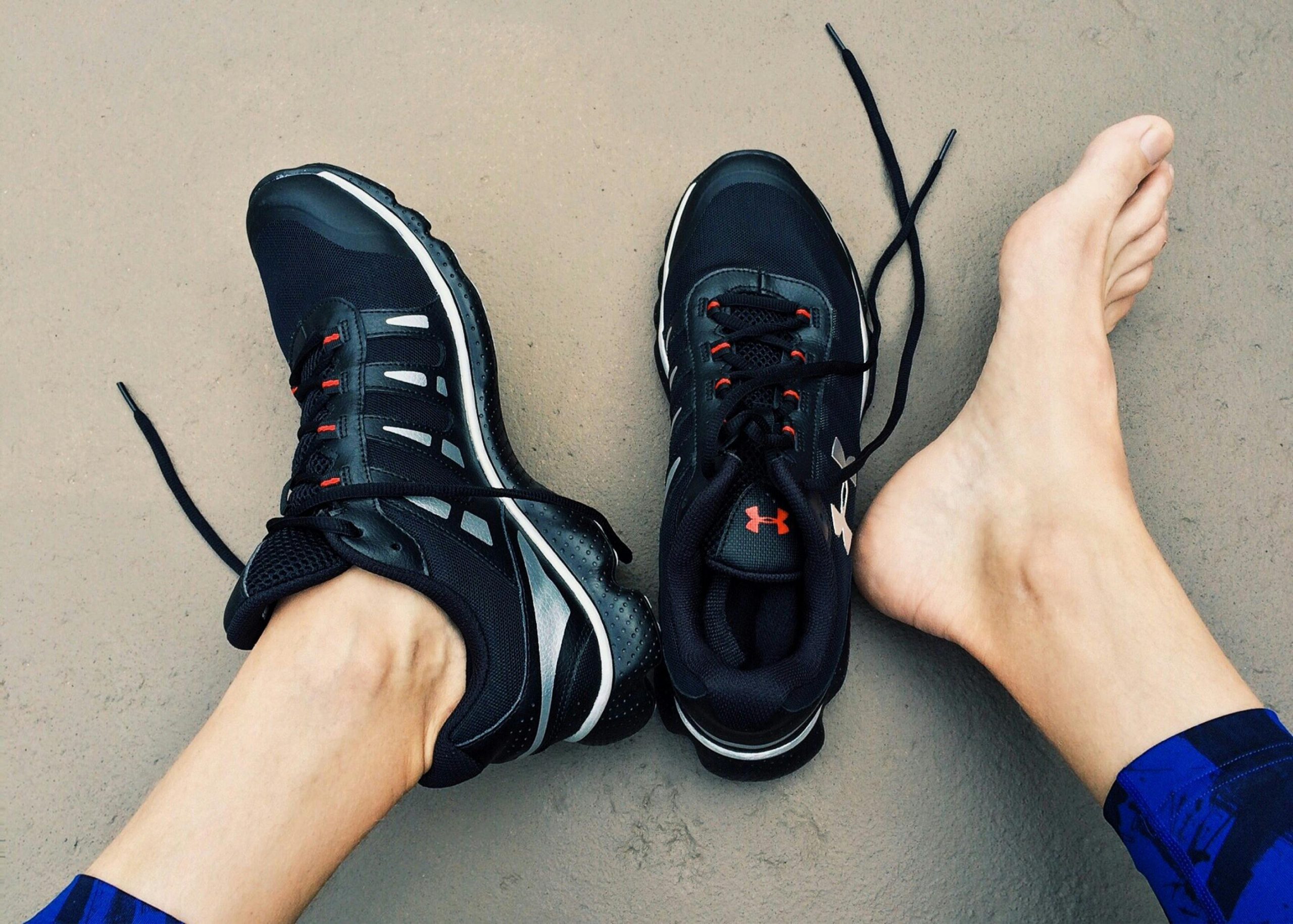In sports and fitness, ankle injuries are almost inevitable. Whether you’re sprinting on the track, making quick cuts on the court, or running trails on the weekend, one wrong move can result in an ankle that swells, throbs, and keeps you off your feet. But how do you know if it’s a sprained ankle or a broken ankle?
It’s a critical distinction—because while the symptoms can feel similar at first, the treatment, recovery time, and risk of reinjury vary significantly. Misjudging your injury can slow healing, worsen the damage, and keep you sidelined longer than necessary.
Let’s break down sprained ankle vs broken ankle in a way that’s useful for athletes, fitness lovers, and weekend warriors alike.
What’s the Difference Between a Sprain and a Break?
Before we dive into symptoms, let’s define the injuries:
- Sprained Ankle: A sprain occurs when the ligaments (tough bands of tissue that connect bones) are stretched or torn. Most ankle sprains happen when the foot rolls inward, overstretching the ligaments on the outside of the ankle.
- Broken Ankle: A break, or fracture, involves an actual crack or complete break in one or more of the ankle bones—typically the tibia, fibula, or talus.
Both injuries hurt. Both can cause swelling and bruising. But they’re not the same—and shouldn’t be treated the same either.
Why It’s Hard to Tell the Difference Right Away
After an ankle injury, you might feel pain, see swelling, and have trouble walking. These overlapping symptoms are why people often mistake a sprain for a break (or vice versa). But treating a fracture like a mild sprain could delay healing—or make things worse.
Here’s what to look out for to avoid misdiagnosis.
Key Symptoms of a Sprained Ankle

Sprains can range from mild (Grade 1) to severe (Grade 3), and symptoms depend on the extent of ligament damage.
Common signs of an ankle sprain:
- Pain on the outer side of the ankle
- Swelling that appears within a few hours
- Bruising and tenderness to touch
- Instability or a wobbly feeling when standing or walking
- Popping sound or sensation at the moment of injury
- Limited range of motion, but some weight-bearing is usually possible
Pro tip: If you can still walk (even with pain), it might lean more toward a sprain—but that’s not a guarantee.
Key Symptoms of a Broken Ankle
A broken ankle often results in more severe and localized pain, especially with weight-bearing or movement.
Look for these telltale signs of a fracture:
- Severe, sharp pain, especially when trying to put weight on the foot
- Immediate swelling that worsens quickly
- Obvious deformity, like bones out of place or a misaligned ankle
- Bruising that may travel farther up the leg
- Inability to walk or bear any weight
- Bone protruding through the skin (in open fractures)
Red flag: If your ankle looks misshapen, swollen beyond belief, or makes you cry out when touched—get to urgent care or the ER right away.
Still Not Sure? Ask These Questions
Sometimes, the symptoms blur. Ask yourself (or the injured person):
- Can I put weight on it?
- Sprain: Often yes, but painful
- Break: Usually not at all without intense pain
- Did I hear or feel a crack?
- Sprain: Might hear a pop
- Break: May feel a distinct snap or crunch
- Is the pain in the soft tissue or on the bone?
- Sprain: More in the ligaments/tendons
- Break: Localized pain right on the bone
- Did the swelling happen gradually or instantly?
- Sprain: Develops over time
- Break: Often rapid and extreme
When to See a Doctor (Don’t Wait It Out)
Even if you suspect a sprain, don’t tough it out if you experience:
- Inability to walk after 24–48 hours
- Swelling that doesn’t go down with rest
- Numbness or tingling in the foot
- Pain that worsens instead of improves
- Visible deformity or bone protrusion
A simple X-ray is the most reliable way to rule out a break. In some cases, doctors may also order an MRI to check for ligament damage if the X-ray shows no fracture but symptoms persist.
How Treatment Differs: Sprained Ankle vs Broken Ankle
Treating an ankle injury properly from the beginning is one of the smartest moves you can make—not just for a faster recovery, but to avoid long-term weakness, chronic pain, or repeated injuries. While both sprains and fractures may cause swelling and mobility issues, the way you treat them should be very different.
Let’s break it down.
Treatment for a Sprained Ankle
If you’re dealing with a sprained ankle, especially a mild or moderate one, you can often manage it at home. But that doesn’t mean you should take it lightly. Ligament damage—even when partial—needs care, rest, and proper rehab to heal completely and restore strength.
Start with R.I.C.E. in the First 48 Hours
Rest
Give your ankle a break. Avoid walking or putting any weight on it for the first couple of days. Use crutches if necessary. Rest gives your ligaments time to begin healing without further strain.
Ice
Apply an ice pack or a bag of frozen peas wrapped in a towel to the injured area for 15–20 minutes every 2–3 hours. This helps reduce swelling and numbs the pain. Never apply ice directly to bare skin—always use a barrier.
Compression
Wrap the ankle with an elastic bandage (like an ACE wrap) or wear a soft ankle brace to control swelling and support the joint. Just make sure it’s snug, not cutting off circulation.
Elevation
Keep your ankle elevated above heart level whenever possible—especially when sitting or lying down. Prop it up with pillows to help minimize swelling and fluid buildup.
When to Go Beyond R.I.C.E.
For more serious sprains—those involving significant ligament tearing or ongoing instability—R.I.C.E. isn’t enough. You might need:
- A walking boot or brace for stability
- Prescription anti-inflammatory medications
- A guided physical therapy plan to restore motion, strength, and balance
- Ankle taping during activities once you return to sports
Estimated Recovery Time for Sprains
- Mild (Grade 1): 1–2 weeks. Some tenderness, minimal swelling. You might limp for a few days but can ease back into activity relatively quickly.
- Moderate (Grade 2): 3–6 weeks. Ligament stretching and partial tears mean you’ll need more rest and structured rehab.
- Severe (Grade 3): 8 weeks or more. Complete ligament tear. You’ll likely need a brace or boot, and recovery can take several months depending on how your body heals and whether physical therapy is followed closely.
Important: Many athletes make the mistake of returning to sports too soon after a sprain because the pain fades before the joint is fully stable. This dramatically increases the risk of reinjury.
Treatment for a Broken Ankle

A broken ankle is a whole different ballgame. It’s not something you can “walk off” or manage on your own. Whether it’s a small crack or a full fracture, you’ll need medical care—and sometimes surgery.
Standard Treatments for a Fracture
Immobilization with a Cast or Boot
Your doctor will likely put your ankle in a cast or a rigid boot to keep the bones aligned and protected while they heal. The type of immobilization depends on the fracture’s severity and location.
Crutches or a Knee Scooter
You’ll need to stay off the injured foot completely—especially in the first few weeks. Crutches are standard, but some people opt for a knee scooter for more mobility without putting any pressure on the foot.
Pain Relief
Over-the-counter pain meds like ibuprofen or acetaminophen can help with discomfort and swelling. For more severe breaks, your doctor may prescribe something stronger—at least in the early days.
Surgery (in some cases)
If the bones are misaligned or unstable, you might need surgery to reset and secure them using plates, screws, or pins. This is especially common with displaced or compound fractures.
Follow-Up Imaging
Regular X-rays or checkups ensure the bones are healing correctly and help your doctor determine when it’s safe to start walking again.
Recovery Timeline for a Broken Ankle
- Minor fractures: 6–8 weeks in a cast or boot, followed by a few weeks of rehab.
- Moderate to severe fractures: 10–16 weeks or more, especially if surgery was involved.
- Return to sports: Often not until 3–4 months after the injury, and only after rehab is complete and clearance is given by a doctor.
Keep in mind: Healing bones is just one part of the process. After weeks in a cast or boot, your ankle will feel stiff, weak, and awkward. Rehab is crucial to regain your full range of motion and stability.
Can You Still Exercise with an Ankle Injury?
If you’re an active person, this is probably one of your biggest questions. Nobody wants to lose fitness gains just because of an injury. The good news? You don’t have to be completely sidelined—but what you can do depends heavily on whether you’re dealing with a sprain or a break.
If You Have a Sprained Ankle
You can usually return to some form of exercise fairly soon—as long as you avoid aggravating the injury. Here’s how to stay active without setting yourself back:
- Upper-body workouts: Seated dumbbell presses, pull-ups, rows, and core work that doesn’t involve standing or balancing on your feet.
- Seated resistance training: Use machines like the seated chest press, cable row, or leg extensions (if they don’t strain the ankle).
- Swimming or water-based workouts: These can be great for moderate sprains once pain has decreased—just make sure the water doesn’t increase swelling.
- Rehab exercises: Once cleared by a medical professional, start doing ankle circles, towel stretches, and eventually progress to balance work.
Start slow, listen to your body, and never push through sharp pain.
If You Have a Broken Ankle
Things are more restricted here. You’ll need to avoid almost all physical activity that involves your legs—especially in the early stages.
What you can do:
- Seated upper-body training: Stick to exercises that let you sit or lie down without using your legs.
- Resistance bands for arms: A great way to stay strong and get a little blood flow going.
- Isometric exercises: These can help keep muscles engaged even while you’re immobile—but they should be guided by your doctor or physical therapist.
Avoid putting any weight on your foot until your physician gives you the all-clear. Trying to “train through” a fracture is a fast track to long-term complications.
Prevention Tips: Avoiding Ankle Injuries in the Future
Once you’ve been injured, you’re more likely to be injured again—unless you take steps to strengthen your ankle and improve stability.
Here’s how to reduce your risk of a repeat injury:
- Warm up properly before workouts or sports
- Incorporate balance training, like single-leg stands or wobble board exercises
- Wear proper footwear for your sport or terrain
- Strengthen supporting muscles, especially calves, quads, hamstrings, and glutes
- Avoid uneven surfaces when tired or distracted
- Use an ankle brace or tape if returning to sports after an injury
- Take a holistic approach to your overall well-being, including proper nutrition, adequate rest, and stress management
FAQs About Sprained vs Broken Ankles
Q: Can I walk on a broken ankle?
A: You might be able to hobble a few steps, especially with a hairline fracture—but it will hurt badly. Most people can’t walk on a truly broken ankle.
Q: Do I need an X-ray for a sprain?
A: Not always, but if pain is severe or lingers more than a few days, an X-ray helps rule out a fracture.
Q: Is bruising worse with a break or a sprain?
A: Both can cause bruising, but breaks often lead to deeper, more widespread discoloration.
Q: How soon can I return to sports after a sprain?
A: Only after full recovery and proper rehab. Returning too soon increases your chance of re-injury significantly.
Final Thoughts: Know the Signs, Get the Right Help
Understanding the difference between a sprained ankle vs broken ankle can make or break your recovery (literally). Athletes often push through pain—but this is one injury where guessing wrong can cause lasting damage.
When in doubt, don’t rely on guesswork or online self-diagnosis. Get the ankle checked, follow through with the right rehab, and ease back into training when your body says it’s ready.
Your future performance—and long-term joint health—depends on it.

